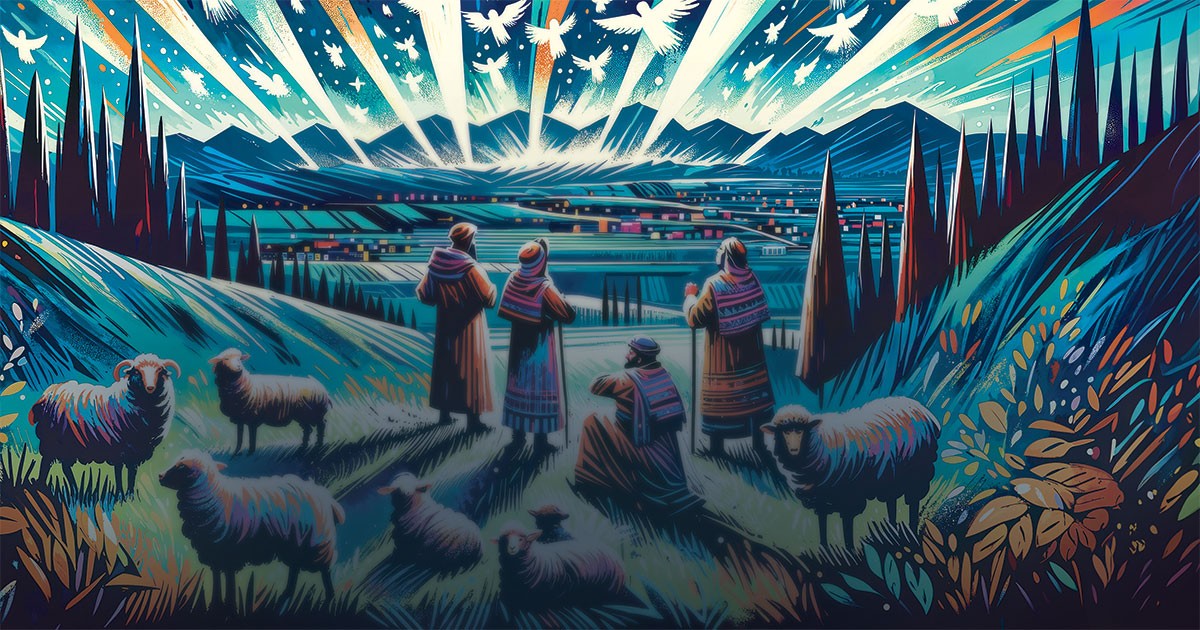It always amazes me how quickly Easter decorations start to line the shelves after Christmas. But what do all those chocolate bunnies, baskets and eggs have to do with Easter? I’m not sure about the bunnies, but the egg has a long history as a symbol of new life—and Jesus’ death and Resurrection bring us new life. One creative way to tell young children the story of Easter is through “Resurrection eggs.”
A trip to any dollar store will get you started. You’ll need a dozen toy eggs, in different colours or numbered from one to 12, an egg carton or basket and the symbols shared in the steps below. Let the child open an egg and take out the object as you tell each part of the story.
A piece of palm branch. On Palm Sunday, Jesus came to Jerusalem to join the Passover celebrations. People were excited to see him, so they waved palm branches and laid them on the road. As he entered the city, they shouted “Hosanna to the Son of David!” (see Matthew 21:1-11).
A cotton ball scented with perfume, or a perfume sample. Jesus visited the home of Mary, Martha and Lazarus. Mary showed her love for Jesus by washing his feet with perfume as he ate in her home (see John 12:2-8).
A cracker or crouton. Jesus gathered with his disciples in Jerusalem to celebrate the Passover meal together. Jesus broke bread and shared it with them. This was his last meal with his disciples (see Matthew 26:26).
A silver coin (nickel or dime). Judas, one of Jesus’ disciples, met with the chief priests. He promised to give Jesus to them for 30 pieces of silver and led them to Jesus when he was praying in a garden (see Matthew 26:14-15, 47-50).
A tiny thorn (a rose bush will work) or grapevine wreath. Jesus was arrested and taken away to be tried. The soldiers mocked and beat Jesus. They made a crown out of thorns and pushed it down on his head (see John 19:1-3).
A cross made from popsicle or toothpick pieces. After his trial, Jesus was forced to carry a cross through Jerusalem to the place called the Skull, where criminals were put to death (see John 19:17).
A nail. When they reached the place of the Skull, the soldiers nailed Jesus’ hands and feet to the cross. Jesus was crucified between two thieves (see John 19:18).
Dice and a piece of cloth. As Jesus was dying on the cross, the soldiers were dividing up his clothes. His inner robe was special because it was woven and had no seams. The soldiers decided they didn’t want to tear the robe, so they rolled dice to decide who would win it (see John 19:23-24).
A piece of sponge. While Jesus was hanging on the cross, he told the soldiers he was thirsty. They dipped a sponge into vinegar and lifted it to his lips so he could drink it. After he drank it, he said, “It is finished,” then bowed his head and died (see John 19:28-30).
Spices such as whole cloves or cinnamon sticks. Because the next day was a special Sabbath, the bodies needed to be removed from the crosses. Joseph from Arimathea asked for permission to take away Jesus’ body. With Nicodemus, they wrapped Jesus’ body in strips of linen and spices (see John 19:31-40).
A rock. Jesus’ body was placed in a garden tomb near where the Crucifixion took place. The tomb was sealed with a stone (see John 19:41-42; Luke 23:52-54).
Empty egg. On the first morning after the Sabbath, Mary Magdalene, Mary (Jesus’ mother) and Salome went to the tomb. When they got there, they found the stone rolled away, and an angel in the tomb. He told them, “Jesus has risen. He is not here.” The women ran to tell Peter and the other disciples what they had found (see Matthew 28:2-7; John 20:1-10).
Resurrection eggs are a great way to share the good news of Easter with children—that Jesus’ death and Resurrection bring us new life. How egg-citing!
Valerie Pavey is the children’s ministry consultant at territorial headquarters.
Photo: Matthew Osmond
A trip to any dollar store will get you started. You’ll need a dozen toy eggs, in different colours or numbered from one to 12, an egg carton or basket and the symbols shared in the steps below. Let the child open an egg and take out the object as you tell each part of the story.
A piece of palm branch. On Palm Sunday, Jesus came to Jerusalem to join the Passover celebrations. People were excited to see him, so they waved palm branches and laid them on the road. As he entered the city, they shouted “Hosanna to the Son of David!” (see Matthew 21:1-11).
A cotton ball scented with perfume, or a perfume sample. Jesus visited the home of Mary, Martha and Lazarus. Mary showed her love for Jesus by washing his feet with perfume as he ate in her home (see John 12:2-8).
A cracker or crouton. Jesus gathered with his disciples in Jerusalem to celebrate the Passover meal together. Jesus broke bread and shared it with them. This was his last meal with his disciples (see Matthew 26:26).
A silver coin (nickel or dime). Judas, one of Jesus’ disciples, met with the chief priests. He promised to give Jesus to them for 30 pieces of silver and led them to Jesus when he was praying in a garden (see Matthew 26:14-15, 47-50).
A tiny thorn (a rose bush will work) or grapevine wreath. Jesus was arrested and taken away to be tried. The soldiers mocked and beat Jesus. They made a crown out of thorns and pushed it down on his head (see John 19:1-3).
A cross made from popsicle or toothpick pieces. After his trial, Jesus was forced to carry a cross through Jerusalem to the place called the Skull, where criminals were put to death (see John 19:17).
A nail. When they reached the place of the Skull, the soldiers nailed Jesus’ hands and feet to the cross. Jesus was crucified between two thieves (see John 19:18).
Dice and a piece of cloth. As Jesus was dying on the cross, the soldiers were dividing up his clothes. His inner robe was special because it was woven and had no seams. The soldiers decided they didn’t want to tear the robe, so they rolled dice to decide who would win it (see John 19:23-24).
A piece of sponge. While Jesus was hanging on the cross, he told the soldiers he was thirsty. They dipped a sponge into vinegar and lifted it to his lips so he could drink it. After he drank it, he said, “It is finished,” then bowed his head and died (see John 19:28-30).
Spices such as whole cloves or cinnamon sticks. Because the next day was a special Sabbath, the bodies needed to be removed from the crosses. Joseph from Arimathea asked for permission to take away Jesus’ body. With Nicodemus, they wrapped Jesus’ body in strips of linen and spices (see John 19:31-40).
A rock. Jesus’ body was placed in a garden tomb near where the Crucifixion took place. The tomb was sealed with a stone (see John 19:41-42; Luke 23:52-54).
Empty egg. On the first morning after the Sabbath, Mary Magdalene, Mary (Jesus’ mother) and Salome went to the tomb. When they got there, they found the stone rolled away, and an angel in the tomb. He told them, “Jesus has risen. He is not here.” The women ran to tell Peter and the other disciples what they had found (see Matthew 28:2-7; John 20:1-10).
Resurrection eggs are a great way to share the good news of Easter with children—that Jesus’ death and Resurrection bring us new life. How egg-citing!
Valerie Pavey is the children’s ministry consultant at territorial headquarters.
Photo: Matthew Osmond
Read this article along with others in the digital version of the April Salvationist magazine. Download and print articles and share on social media.










Leave a Comment